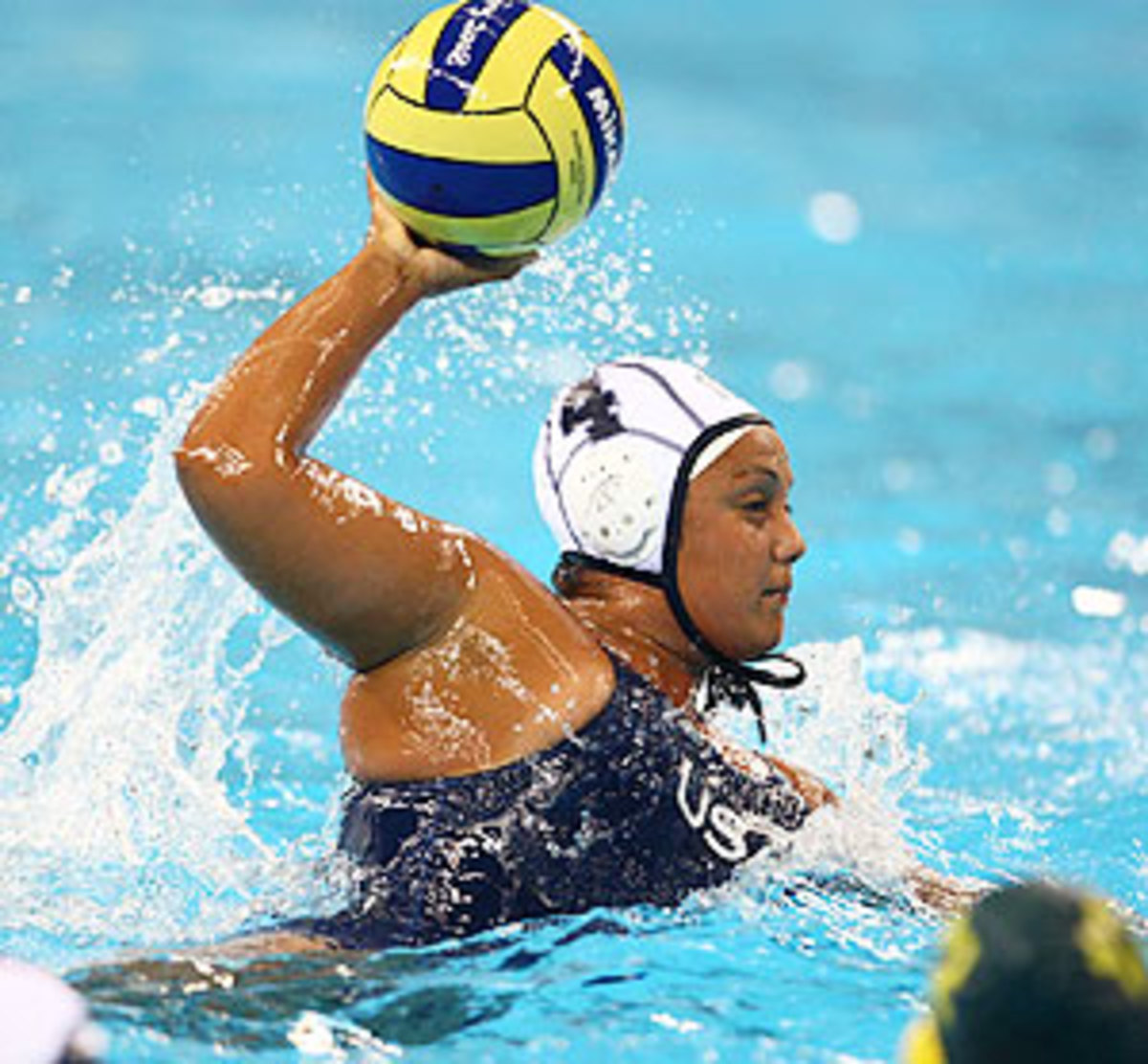
Americans fight off physicality and emotions to sink tough Aussies
In the most entertaining rivalry on water since Roy Scheider vs. Jaws, the United States defeated Australia, 9-8, Tuesday in the Olympic semifinals of the fierce sport of water polo -- sometimes also known as synchronized drowning.
Guy Baker, the generous American coach whose team coughed up a three-goal lead in the final period before rallying, later likened Yankees-Aussies to Yankees-Red Sox, which is analogous only when Pedro Martinez is shoving Don Zimmer to the ground or Jason Varitek and Alex Rodriguez are rolling around home plate. The grabbing and scratching and clawing are remarkable, and that's just in the pre-match handshakes.
The teams have what the esteemed Keith Jackson, if he ever ventured out of Pac 10 football to call some old-fashioned water polo, might describe as a healthy dislike for each other. There is a history, even if the history of women's water polo in the Olympics is relatively brief. The rivalry goes back to the beginning, the initial gold-medal game in 2000 when Australia scored a controversial goal with 1.3 seconds to steal the victory. Four years later in Athens, the Americans deprived the Aussies of a medal with a one-goal win in the third-place match.
But there is always a fresh insult, a new twist to the matches between the teams that seem to play as often as those in the American League East. (The semifinal was their 15th match of the year. They even scrimmaged when they reached Beijing, a little Grapefruit League water polo.) After Australia edged China by a goal this week to set-up the U.S. match, Australian coach Greg McFadden declared, "We've survived and we're going to beat America next." The words reached the U.S. players in a nanosecond.
"There are no secrets in water polo," said Natalie Golda, who scored the first American goal. "It's a small world."
But neither the physicality -- Lauren Wenger broke her right hand and is out of the gold-medal game Thursday against the Netherlands -- nor the pre-match emotion matters as much as having a water-polo savant on your side.
As an 8-5 U.S. lead dissipated late in the fourth quarter, Brenda Villa kept feathering the ball to open shooters on offense and hand-fighting Aussies on defense. And with the game ticking down and overtime looming, the 28-year-old Villa skipped a power-play shot past goalie Alicia McCormack with a minute remaining for the winning goal. As Villa swam back up the pool, she slapped the water in triumph.
"In crucial games she'll take the shots," McFadden said. "She doesn't look much like a water polo player, but she's got the brain, got the skills, and she's got to be rated as one of the best players in the world."
In a sport in which maybe three-quarters of the play is hidden below the surface, Villa is impossible to miss -- and not only because she is a 5-foot-4, 174-pound dark-sinned Latina on a sport that, at least back home, seems to be dominated by lanky California blondes.
There is something counterintuitive about the American captain being an all-world player. She is short. Her arms are not especially long. And while she gets up and down the pool smartly and is built to give as good as she gets in the ritual underwater beatings -- she was the lone American player other than goalie Betsey Armstrong to be in the water the entire 32 minutes -- she does not possesses Phelpsian speed. But as Baker has noted, Villa is her sport's version of Wayne Gretzky, who was neither hockey's hardest shooter nor fastest skater. Like Gretzky, Villa, one of two U.S. players left from the stunner in Sydney, simply sees her sport at a higher level.
"Brenda's got skills," teammate Kami Craig said. "She's been playing the game forever. She sees things before they even happen. She's got the knowledge of the game. I call it Brendar. I put on my Brendar as soon as I get in the water, and I know that if she sees me open in the center she's going to put that ball right on my hand. "
"The water is a great equalizer," Golda said. "You look at other teams across the board and there are a lot of tall girls, but you don't have to be in order to make it far in the sport -- For example in basketball, the taller you are, the longer you are, it's a little easier to play the game. You can dunk the ball or get rebounds. But water polo, we're all about a head tall. Brenda grew up playing against boys, who were obviously taller and faster. She learned the game. Your positioning and intelligence is what separates you from others. You can be 6-8, 250 pounds, but if you've got bricks for hands and can't swim up and down the pool."
Villa can do that, even while being mugged.





